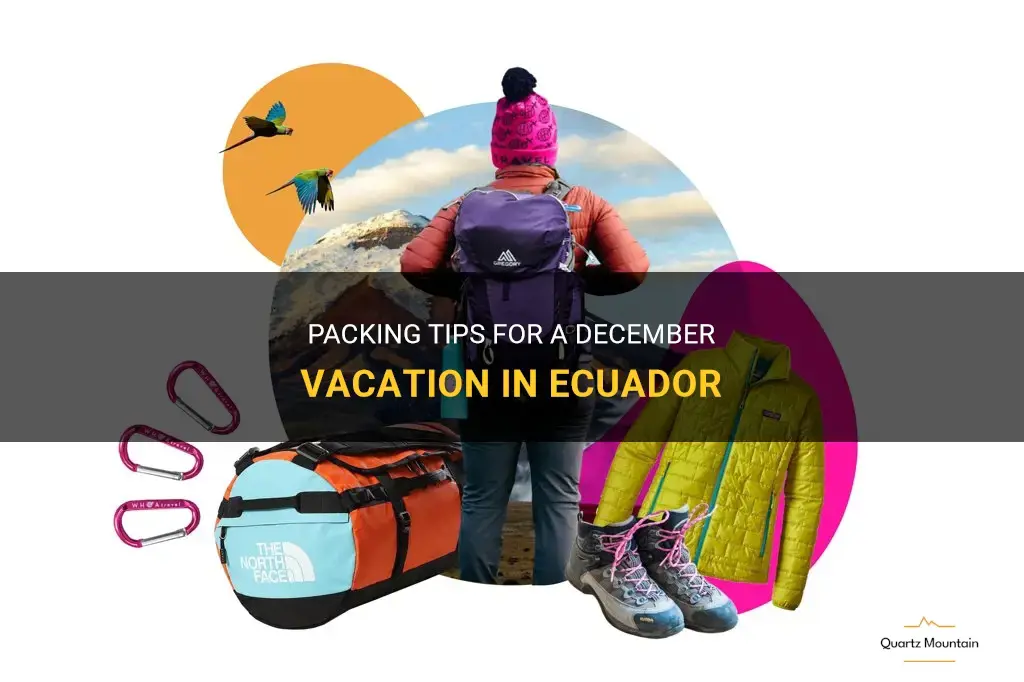
If you're planning a December vacation in Ecuador, you're in for a treat. This South American gem offers a unique combination of stunning landscapes, vibrant culture, and incredible biodiversity. But before you hop on that plane, it's important to pack smart. In this guide, we'll share some useful tips to help you make the most of your trip and ensure you have everything you need for a memorable adventure in Ecuador. From warm clothing for chilly nights in the Andes to lightweight gear for exploring the enchanting Galapagos Islands, we've got you covered. So grab your suitcase and get ready to embark on a December vacation you'll never forget.
What You'll Learn
- What types of clothing should I pack for Ecuador in December?
- Are there any specific items I should bring for outdoor activities or excursions?
- Should I pack any specific items for protection from the sun or insects?
- Is there anything I should pack specifically for the Galapagos Islands if I plan on visiting?
- Are there any cultural or etiquette considerations to keep in mind when packing for Ecuador in December?

What types of clothing should I pack for Ecuador in December?
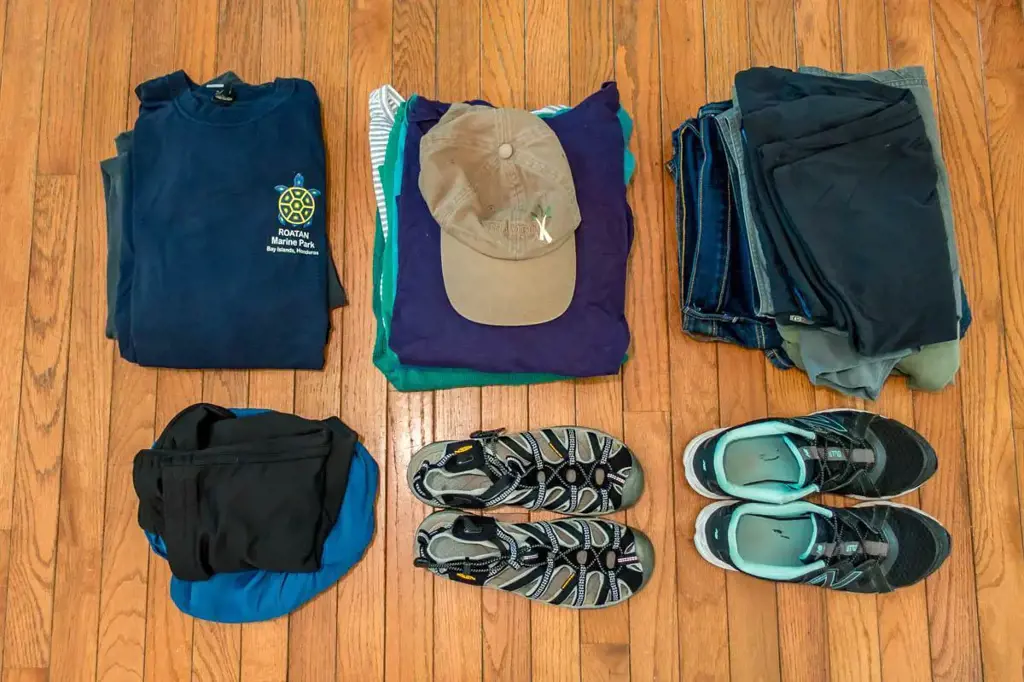
When visiting Ecuador in December, it is important to pack a variety of clothing to be prepared for the different climates and activities that you may encounter. Ecuador is known for its diverse geography, which includes the coastal region, the Andes Mountains, and the Amazon rainforest. Each region has its own climate, so it is important to pack accordingly.
For the coastal region, which includes cities like Guayaquil and Manta, December is part of the summer season, so you can expect warmer temperatures and high humidity. It is best to pack lightweight, breathable clothing such as shorts, t-shirts, and sundresses. Don't forget to bring a hat and sunglasses to protect yourself from the strong sun. You may also want to bring a light jacket or sweater for cooler evenings.
If you plan to visit the Andes Mountains, which includes popular destinations like Quito and Cuenca, December is part of the rainy season. It is important to pack clothing that is both warm and waterproof. Be sure to bring long pants, long-sleeved shirts, and a waterproof jacket or raincoat. Layers are key, as the temperature can change throughout the day, with mornings and evenings being cooler and afternoons being warmer. It is also a good idea to bring a hat, gloves, and a scarf for added warmth.
For those venturing into the Amazon rainforest, December is also part of the rainy season. It is essential to pack lightweight, quick-drying clothing that will keep you comfortable in the hot and humid conditions. Long pants and long-sleeved shirts are recommended to protect against bugs and sun exposure. Additionally, bring a wide-brimmed hat, insect repellent, and comfortable hiking shoes or boots.
Regardless of which region you are visiting, it is a good idea to pack a waterproof backpack or daypack to protect your belongings from rain or water activities. It is also important to bring a swimsuit if you plan to visit the beach, as well as comfortable walking shoes or sandals for exploring cities and towns.
In summary, when packing for Ecuador in December, consider the specific region you will be visiting and pack accordingly. For the coastal region, bring lightweight, breathable clothing. For the Andes Mountains, pack warm, waterproof clothing and layers. And for the Amazon rainforest, pack lightweight, quick-drying clothing and protective gear. Remember to always check the weather forecast before your trip and be prepared for changes in climate.
The Essential Packing List for Your Getaway House Retreat
You may want to see also

Are there any specific items I should bring for outdoor activities or excursions?
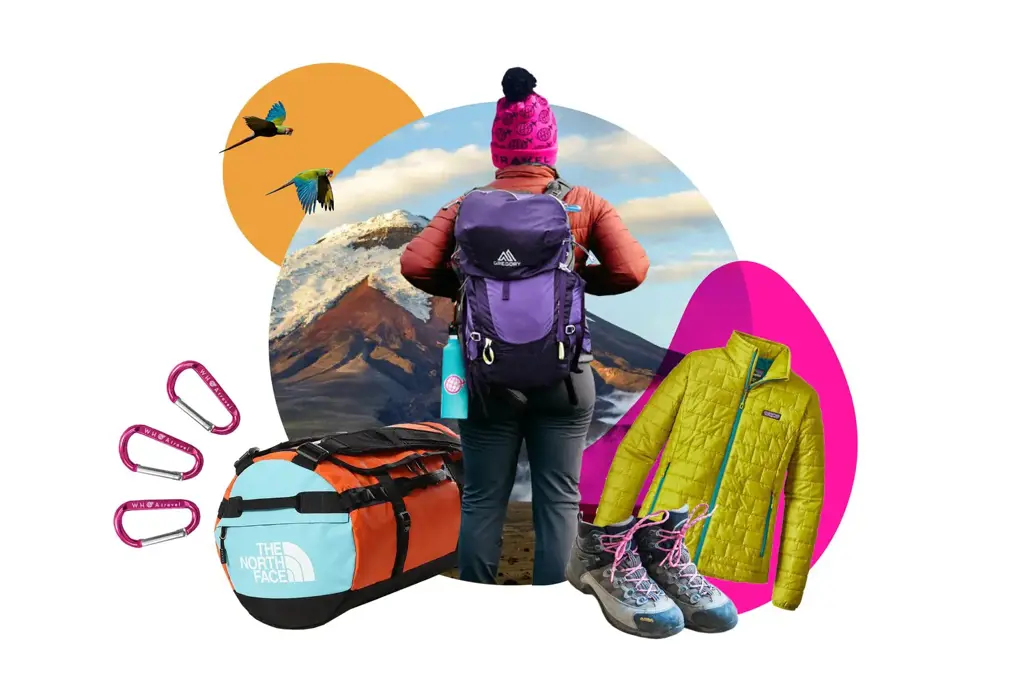
When planning for outdoor activities or excursions, it is important to bring along certain items that will enhance your overall experience and ensure your safety. Whether you are going on a hike, camping trip, or any other outdoor adventure, here are some specific items that you should consider bringing with you:
- Navigation tools: Depending on the nature of your outdoor activity, it is essential to have the right tools to navigate your way through unfamiliar terrains. A compass, topographic maps, or a handheld GPS device are all helpful in ensuring you don't get lost. Familiarize yourself with the tools beforehand to make the most of them during your excursion.
- Proper footwear: Investing in a good pair of outdoor shoes or boots is crucial for any outdoor activity. Make sure your footwear is comfortable and provides adequate support for your feet. If you are going hiking or trekking, consider wearing sturdy hiking boots that offer ankle support and grip well on various surfaces.
- Rain gear: The weather can be unpredictable outdoors, and it is essential to be prepared for rain. Carry a lightweight, waterproof jacket and pants to keep yourself dry if it starts pouring. Additionally, pack a waterproof cover for your backpack to protect your belongings.
- First aid kit: Accidents can happen, regardless of the outdoor activity you engage in. Having a basic first aid kit with items such as bandages, antiseptic wipes, and pain relievers is essential. Customize your first aid kit based on your specific needs and the duration of your excursion.
- Extra clothing layers: Even if the weather forecast predicts sunny skies, it is wise to bring extra clothing layers with you. Temperature can fluctuate significantly during outdoor activities, especially in mountainous or remote areas. Pack lightweight and versatile clothing that can be easily layered to adapt to changing weather conditions.
- Snacks and water: When spending time outdoors, it is crucial to stay hydrated and energized. Carry an adequate amount of water based on the duration and intensity of your activity. Additionally, pack nutritious snacks such as energy bars, nuts, or dried fruits to keep your energy levels up throughout the day.
- Sun protection: Protecting yourself from the sun is vital in preventing sunburn and long-term damage to your skin. Always bring sunscreen with a high SPF and apply it generously before heading outdoors. Don't forget to wear a hat and sunglasses to shield your face and eyes from the sun's harmful rays.
- Multi-purpose tool: A multi-purpose tool, such as a Swiss Army knife, can be incredibly useful during outdoor activities. It can serve various functions like cutting ropes, opening cans, or assisting in minor repairs. Choose a tool that suits your needs and ensure it is easily accessible.
- Communication devices: In case of emergencies or if you are venturing into remote areas, it is wise to carry communication devices such as a fully charged mobile phone or a two-way radio. Make sure you have a reliable way to contact emergency services or communicate with others if needed.
- Personal identification and emergency contact information: Always carry your identification documents, including a driver's license or passport, in case of any unforeseen circumstances. Additionally, have a written list of emergency contact information that can be accessed easily by yourself or others.
Remember, the specific items you bring may vary depending on the particular outdoor activity, the duration of your excursion, and your personal preferences. It is always best to plan ahead, research the area you will be exploring, and consult with experienced individuals to ensure you have everything you need for a safe and enjoyable outdoor adventure.
Essential Packing Tips for a Fred Olsen Cruise Journey
You may want to see also

Should I pack any specific items for protection from the sun or insects?

When planning a trip to a sunny or insect-prone destination, it is essential to pack specific items for protection from the sun and insects. These items can help prevent sunburn, sun damage, and insect bites, allowing you to enjoy your vacation without discomfort or health risks. Here are some recommendations for what to pack:
Sun Protection:
- Sunscreen: Choose a broad-spectrum sunscreen with an SPF (Sun Protection Factor) of at least 30. Apply it generously to all exposed areas of skin and reapply every two hours or more frequently if you are sweating or swimming.
- Sun hat: A wide-brimmed hat that shades your face, neck, and ears can provide extra protection from the sun. Opt for a hat made of breathable fabric to keep your head cool.
- Sunglasses: Look for sunglasses that block 100% of UVA and UVB rays to protect your eyes from harmful sun exposure. Polarized lenses can also reduce glare and improve visibility.
- Lightweight, long-sleeved clothing: Wearing lightweight, loose-fitting, and tightly woven clothes can protect your skin from the sun's rays. Consider packing long-sleeved shirts, pants, and a lightweight scarf or shawl for added coverage.
- Lip balm with SPF: Don't forget to protect your lips from the sun by using a lip balm with SPF. Look for one that provides broad-spectrum protection and has moisturizing properties.
Insect Protection:
- Insect repellent: Choose an insect repellent with an effective active ingredient such as DEET, picaridin, or oil of lemon eucalyptus. Apply it to exposed skin according to the product instructions. Consider packing a travel-sized repellent for on-the-go protection.
- Permethrin-treated clothing: Treat your clothing with permethrin, an insecticide that repels and kills insects upon contact. Permethrin-treated clothing can provide long-lasting protection against mosquitoes, ticks, and other biting insects.
- Insect bite relief: Pack an anti-itch cream or gel containing ingredients like hydrocortisone or calamine lotion in case of insect bites. These can help relieve itching and reduce inflammation if you do get bitten.
- Mosquito net: If you are traveling to an area with a high risk of mosquitoes or other insects, consider packing a lightweight mosquito net to hang over your bed. This can provide an extra layer of protection while you sleep.
It is important to remember that while these items can greatly reduce the risk of sunburn and insect bites, they are not foolproof. It is still crucial to take additional precautions like avoiding peak sun hours, seeking shade when possible, and wearing protective clothing. Additionally, be sure to check local guidelines and recommendations for specific destinations, as they can vary depending on the region.
By packing these specific items for sun and insect protection, you can fully enjoy your trip without worrying about the harmful effects of the sun or pesky insect bites. Stay safe and have a fantastic vacation!
Essential Items to Pack for an Unforgettable Oregon Coast Trip
You may want to see also

Is there anything I should pack specifically for the Galapagos Islands if I plan on visiting?
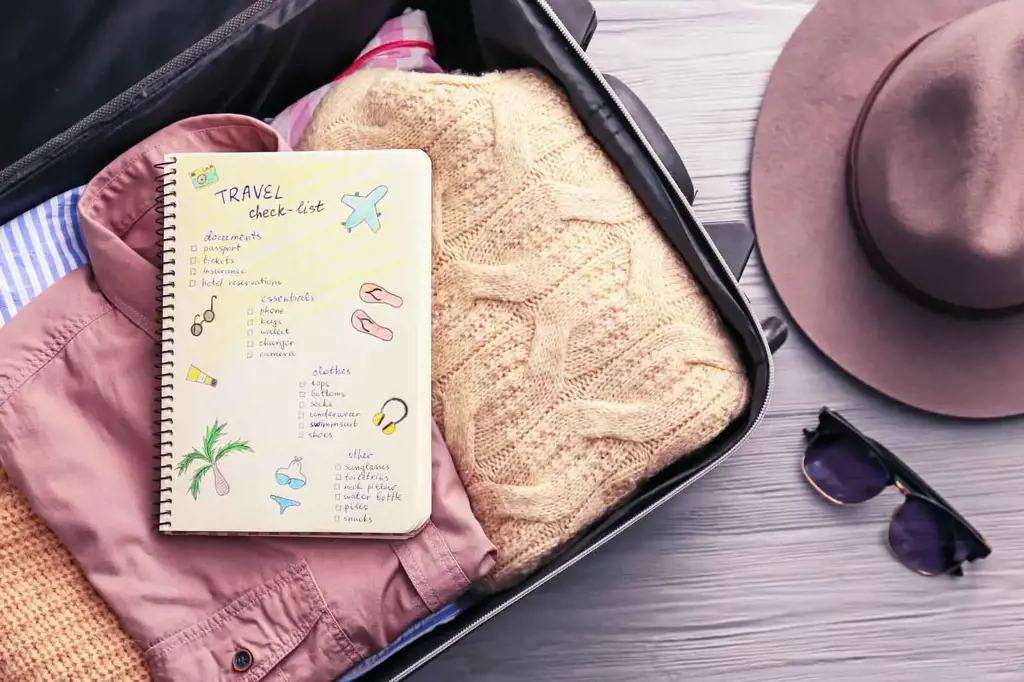
If you're planning a visit to the Galapagos Islands, it's important to pack strategically to ensure you are well-prepared for your trip. The Galapagos Islands are a unique and fragile ecosystem, and it is crucial to pack in a way that minimizes your impact on the environment. Here are some items you should consider including in your packing list:
- Reef-Safe Sunscreen: One of the most important items to pack for a trip to the Galapagos Islands is reef-safe sunscreen. Regular sunscreen contains harmful chemicals that can damage the delicate coral reefs and marine life in the Galapagos. To protect the environment, choose sunscreen that is labeled as "reef-safe" or "oxybenzone-free."
- Waterproof and Lightweight Clothing: The Galapagos Islands experience a unique climate and can be quite hot and humid. It's important to pack lightweight and breathable clothing that will keep you cool and dry during your activities. Additionally, pack waterproof clothing, such as a rain jacket or poncho, as there may be occasional rain showers.
- Sturdy and Comfortable Shoes: Many of the activities in the Galapagos Islands involve walking and hiking, so it's essential to pack sturdy and comfortable shoes. Choose closed-toe shoes with good traction to protect your feet and provide stability on uneven terrain.
- Binoculars: The Galapagos Islands are known for their diverse wildlife, including unique bird species. Packing binoculars will allow you to get a closer look at the incredible fauna and flora without disturbing the animals.
- Water Bottle and Reusable Bags: In an effort to reduce waste and the use of single-use plastics, it's recommended to bring a reusable water bottle and reusable bags. The tap water in the Galapagos is generally safe to drink, so you can refill your water bottle throughout your trip. Additionally, reusable bags come in handy for carrying souvenirs or snacks while exploring the islands.
- Insect Repellent: The Galapagos Islands are home to mosquitoes and other biting insects, particularly during the wet season. Packing insect repellent will help protect you from bites and potential diseases.
- Camera: To capture the incredible beauty and wildlife encounters in the Galapagos Islands, don't forget to pack a camera. Whether it's a DSLR, a point-and-shoot, or even just your smartphone, having a camera allows you to document your experiences and share them with others.
- Prescription Medications and First Aid Kit: If you take any prescription medications, be sure to pack an ample supply for the duration of your trip. It's also a good idea to bring a basic first aid kit with essentials like band-aids, antiseptic, and any personal medications you may need.
- Snorkeling Gear: Snorkeling is a popular activity in the Galapagos Islands, and packing your own snorkeling gear can save you rental fees and ensure a comfortable and secure fit. Consider bringing a snorkel, mask, and fins to make the most of the underwater wildlife encounters.
- Waterproof Phone Case: Lastly, if you plan to bring your phone or electronic devices with you while exploring the Galapagos, it's a good idea to invest in a waterproof phone case. This will protect your devices from water damage and allow you to capture photos and videos even in wet or humid conditions.
Remember, when packing for your trip to the Galapagos Islands, it's important to prioritize items that are environmentally friendly, lightweight, and practical. By packing responsibly, you can enjoy your time in this unique ecosystem while preserving and respecting the delicate balance of nature.
Creative Lunchbox Ideas: Packing a Delicious and Nutritious Meal for Any Occasion
You may want to see also

Are there any cultural or etiquette considerations to keep in mind when packing for Ecuador in December?
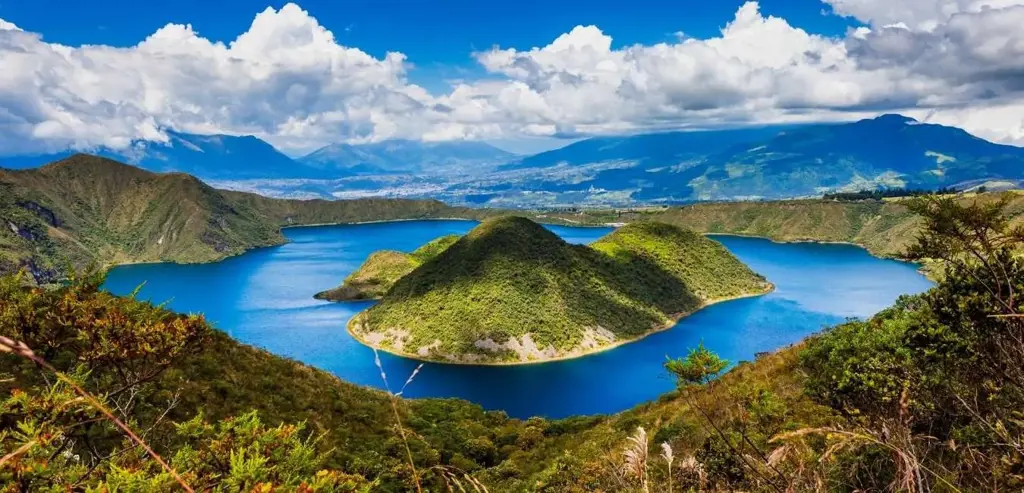
When packing for a trip to Ecuador in December, it is important to consider the local culture and etiquette to ensure a respectful and comfortable experience. Here are some key cultural and etiquette considerations to keep in mind when packing for your trip:
- Dress Code: Ecuador is a country with a mix of modern and traditional values, so it is important to dress modestly and conservatively, especially when visiting religious sites or more rural areas. Avoid wearing revealing or provocative clothing and opt for comfortable, lightweight fabrics that are appropriate for warm weather.
- Respect for Religion: Ecuador is a predominantly Catholic country, and religion plays an important role in the local culture. When visiting churches or participating in religious festivals, avoid wearing shorts, tank tops, or anything that may be deemed disrespectful. It is also customary to dress up for religious events, so consider packing a more formal outfit for these occasions.
- Footwear: Ecuador is known for its diverse landscapes and outdoor activities, so it is essential to pack appropriate footwear. Bring comfortable walking shoes or hiking boots for exploring the countryside, as well as a pair of sandals or flip-flops for the beach. In urban areas, it is common to see locals wearing stylish and polished shoes, so consider packing a nice pair for evenings out.
- Weather Considerations: December falls during the rainy season in Ecuador, especially along the coast and in the Amazon rainforest. Pack a lightweight rain jacket or umbrella to stay dry, along with quick-drying clothes and waterproof shoes. Layering is also key as the weather can vary greatly from region to region, so bring a mix of lightweight, breathable tops and sweaters or jackets for cooler evenings.
- Sun Protection: Despite the rain, the sun can still be strong in Ecuador, so packing sun protection is crucial. Bring a wide-brimmed hat, sunglasses, and sunscreen with a high SPF. It is also a good idea to pack a lightweight, long-sleeved shirt and pants to protect yourself from the sun during outdoor activities.
- Cultural Sensitivity: Ecuador has a rich indigenous heritage, particularly in the Andean region, so it is important to be respectful of local customs and traditions. Avoid wearing clothing or accessories that are replicas of indigenous designs, as this can be seen as cultural appropriation. Instead, support local artisans by purchasing authentic handmade products.
- Personal Hygiene: Ecuador is known for its clean streets and public spaces, so it is important to maintain good personal hygiene to respect local customs. Carry a hand sanitizer or wet wipes for quick clean-ups, and pack a small towel or reusable cloth for drying your hands in public restrooms.
By considering these cultural and etiquette considerations when packing for Ecuador in December, you can ensure a respectful and enjoyable trip. Remember to research the specific regions you will be visiting for any additional cultural norms, and always be mindful and respectful of the local customs and traditions.
Essential Items to Pack for Boarding School: Your Comprehensive Guide
You may want to see also
Frequently asked questions
In December, Ecuador experiences a mix of weather conditions. While coastal areas can be warm with temperatures reaching the mid-70s, the Andes regions can be cool and mountainous with temperatures dropping to the low 50s. Therefore, it is advisable to pack a variety of clothing options. Bring lightweight and breathable clothing such as shorts, t-shirts, and dresses for coastal areas, and also pack warmer layers like long-sleeved shirts, sweaters, and jackets for the highlands.
Yes, there are a few essential items you should pack for a trip to Ecuador in December. Firstly, don't forget to pack a good pair of comfortable walking shoes as you may be doing a lot of walking and hiking in various terrains. Also, bring a hat, sunglasses, and sunscreen to protect yourself from the strong sun, especially in coastal areas. Additionally, pack a lightweight rain jacket or poncho as December is part of the rainy season in Ecuador.
If you are planning on participating in outdoor activities or adventures, there are a few specific items you should pack. For example, if you plan on hiking in the Andes, it is important to pack proper hiking boots, warm socks, and thermal layers, as the temperatures can drop significantly in the mountains. If you are visiting the Amazon rainforest, pack insect repellent, lightweight and breathable clothing, and a waterproof backpack or dry bag to protect your belongings from the rain and humidity.







